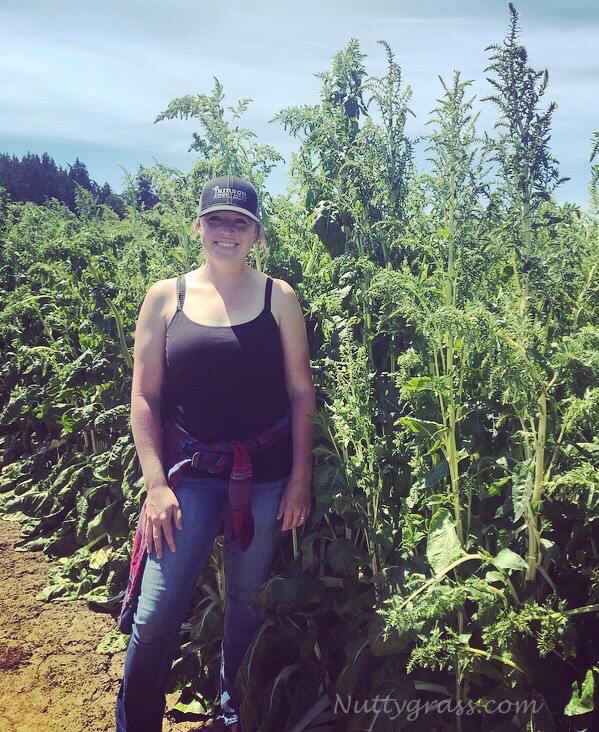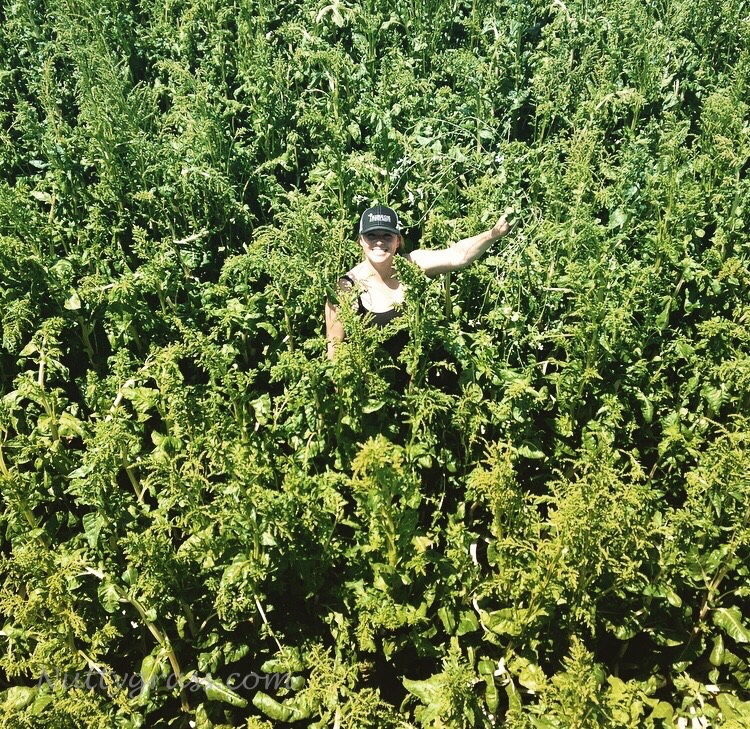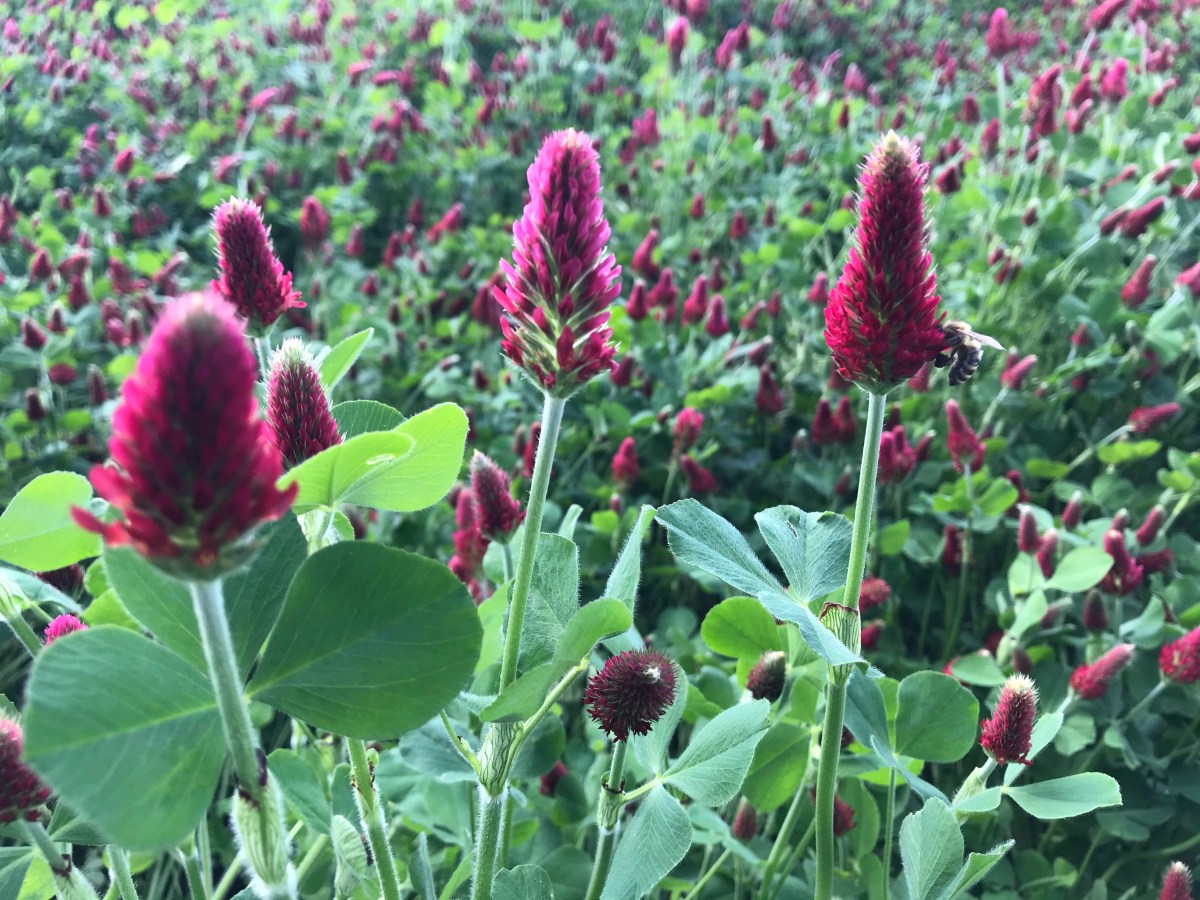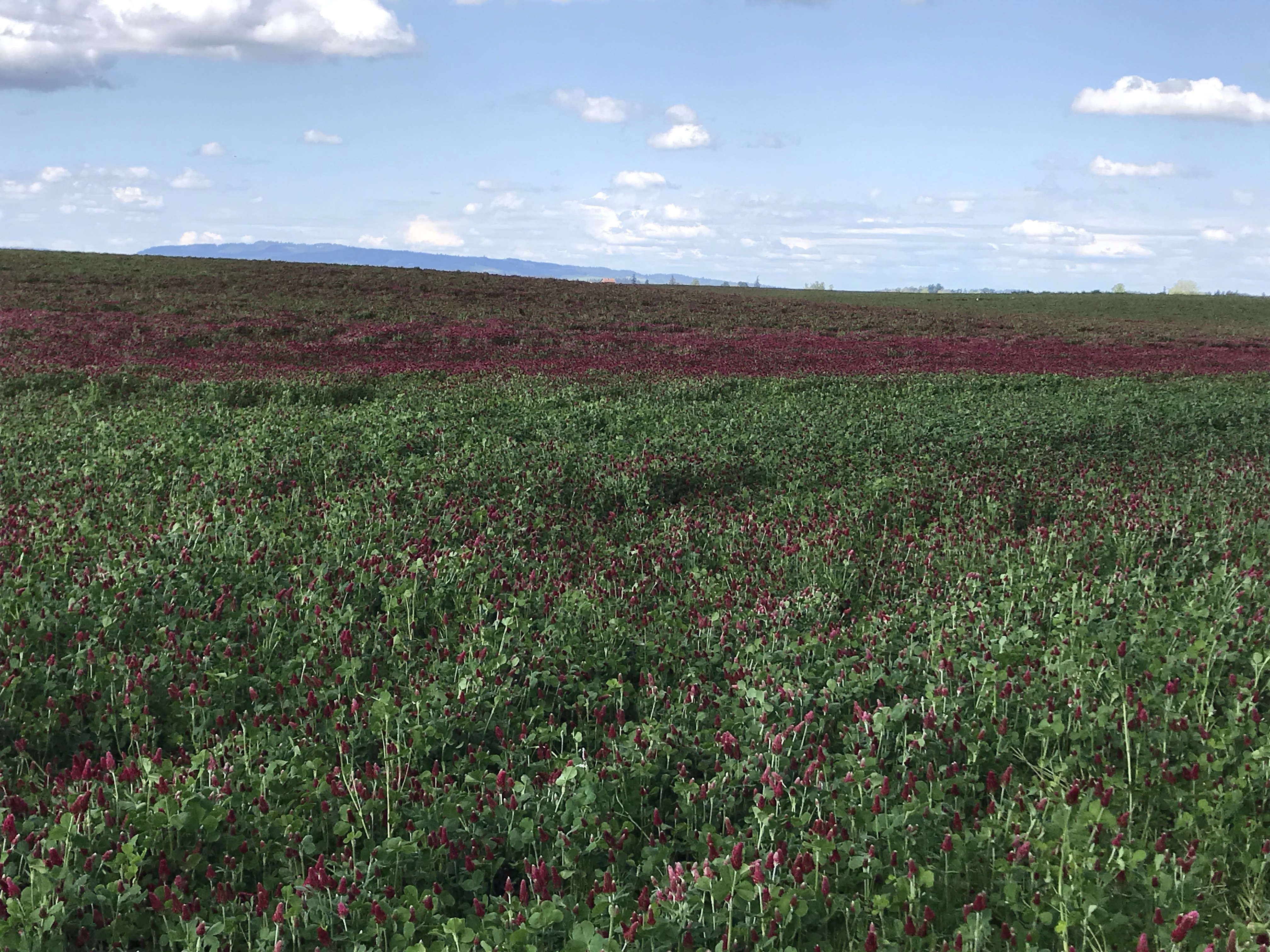
One of the crops on our farm is Swiss chard for seed. This year we are growing a green variety, and it has decided to grow well over 8 feet tall!! We are also growing a field of radish seed right next door, which in most cases wouldn’t really be a problem. However, this year we noticed that there were a few stray radish plants in our Swiss chard field.
This becomes an issue of variety purity. Radish is pollinated by bees, so we have to get the wild (or off type) radish plants out of the Swiss chard before the bees went and hung out on those flowers and then possibly went to our production radish field and pollinated with the wrong variety of pollen. It’s one of those fun “we love being seed farmers” type of things!
So how does one go and find radish in a field that is…well…quite a few feet taller than I am?! Farmers are problem solvers, and Matt had an idea that maybe if we got high enough we could have a better vantage point to see down into the stalks of Swiss chard. This field was planted with alleyways to help us better manage the crop as it grows to full height, so we decided to drive each of those two times to get a good view of the whole field. So we hooked up the man basket to the loader tractor and headed out to the field. Once there Matt climbed up into the man basket, I took the wheel of the John Deere, hoisted him up, and we were off.

And it basically went like this… I would drive each alleyway once per side, always too slow or too fast. While shifting I would (maybe) make Matt’s heart beat a little faster as he “hung on for dear life” (his words not mine). Then every once and awhile he would holler and point to some area in the field. I would jump off the tractor into the jungle, instantly engulfed in stalks of chard, while he “navigated” me through the crop to the off type radish so I could pull it out.
Navigating Skills were as follows (at full volume to be heard over the tractor engine mind you):
“LEFT, NO YOUR OTHER LEFT.”
“MAYBE WE SHOULD USE NORTH AND SOUTH AS DIRECTIONS?”
“BRENDA…NORTH IS THE OTHER WAY!”
“WHERE ARE YOU GOING??”
“YOU PASSED IT….”
“TURN AROUND. OK. TURN AROUND AGAIN.”
“DO YOU EVEN SEE IT?”
“IT’S RIGHT IN FRONT OF YOU!”
“HOW DO YOU NOT SEE IT?”
I won’t tell you what my equally witty responses were, if you know me, I’m sure you can make your own assumptions (haha!)

We didn’t find too many, but it was important that we found the few and and got rid of them to keep the purity of the radish variety. Growing crops for seed can be tricky sometimes, there is a lot of high risk and high reward moments; and also moments that make you stop and think, “So how the heck are we going to do that??” Like when you’re staring at an 8 foot tall jungle of Swiss chard, knowing that you need to get in there and look for tiny white flowers.
This crop will be ready to harvest later this summer. The seed is used to grow Swiss chard for mixed green salad mixes.









